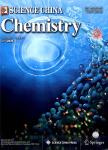High-throughput structure determination of polycrystalline functional materials: a platform for automated 3DED/MicroED data collection
作者机构:State Key Laboratory of Coordination Chemistry School of Chemistry and Chemical Engineering Nanjing University Department of Mechanical Engineering The Hong Kong Polytechnic University
出 版 物:《Science China Chemistry》 (中国科学:化学(英文版))
年 卷 期:2024年
核心收录:
学科分类:08[工学] 080501[工学-材料物理与化学] 0805[工学-材料科学与工程(可授工学、理学学位)]
基 金:supported by the National Natural Science Foundation of China (22371121), the Natural Science Foundation of Jiangsu Province (BK20230772) the Fundamental Research Funds for Central Universities of China (020514380306)
摘 要:Structure determination plays the most crucial role in the discovery of novel functional materials, because only by knowing the intrinsic structures can we accurately and completely understand their properties and applications. However, most new materials are obtained in polycrystalline form or even as mixtures with multiple phases when first synthesized, presenting significant challenges in their structure determination and phase elucidation. Fortunately, the developed three-dimensional electron diffraction (3DED/MicroED) has provided a promising solution to overcome these challenges. In this study, we have constructed a state-of-the-art 3DED/MicroED data acquisition equipment by integrating a hybrid-pixel detector with a script developed for SerialEM, and thus successfully developed an automated 3DED/MicroED method for the high-throughput structure determination. To demonstrate its effectiveness, a multiphase sample with complex porous structures is employed, showcasing that individual phases and their structures can be identified and determined, respectively. One remarkable finding is the identification of an impurity metal-organic framework (MOF) that is completely invisible to traditional powder X-ray diffraction in a supposedly “pure commercial MOF sample. Additionally, our method also enables the atomic-resolution structure determination of flexible covalent organic framework materials, which are highly sensitive to electron beams. Moreover, a new microporous aluminoborate is discovered using this rapid structure determination method. These experimental results highlight the enormous potential of our 3DED/MicroED method in the field of new materials discovery, offering a powerful tool for the structure determination of polycrystalline functional materials.



